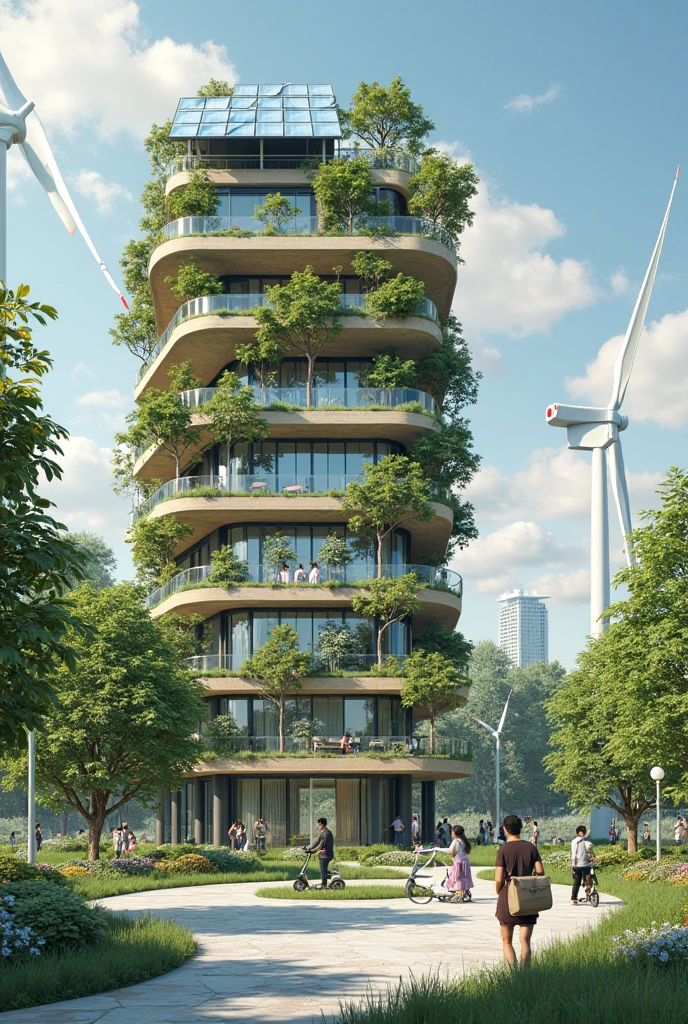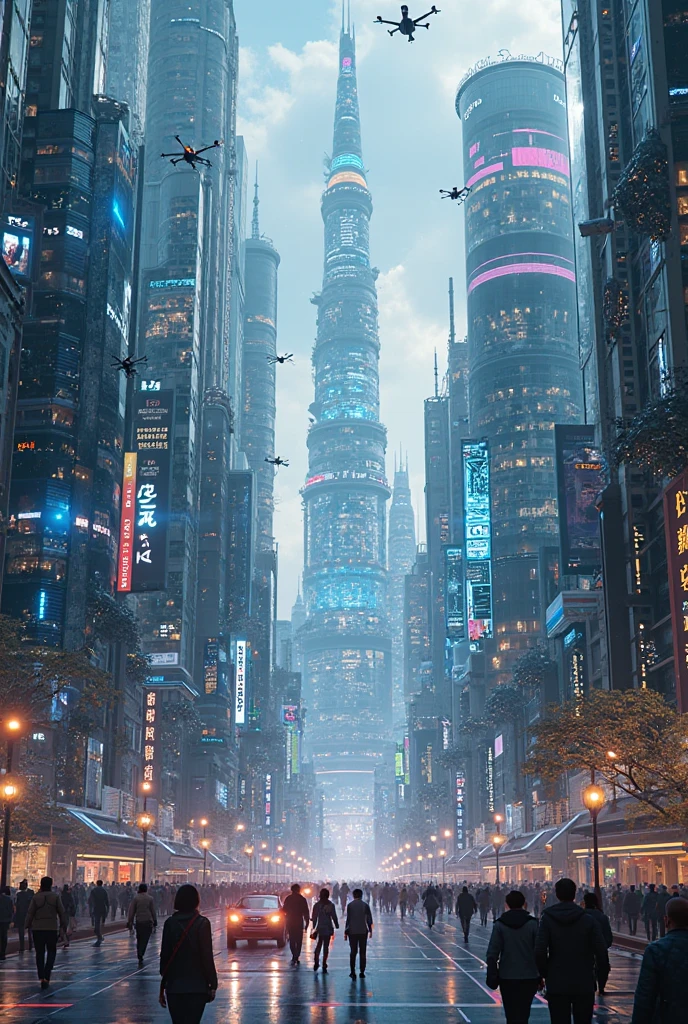Introduction
Last week, my smart refrigerator sent a notification that I was running low on milk, automatically added it to my shopping list, and suggested recipes based on the remaining ingredients inside. Just five years ago, this level of technological integration would have seemed like science fiction. Today, it’s just another Tuesday in a world transformed by new era technology.
We’re living through a remarkable technological revolution where the boundaries between digital and physical worlds are blurring. New era technology encompasses the cutting-edge innovations that are fundamentally changing how we work, live, and interact with our environment. From artificial intelligence that predicts our needs to blockchain systems that secure our transactions, these technologies aren’t just improving existing processes—they’re creating entirely new possibilities.
The acceleration of new era technology has been nothing short of extraordinary, with each breakthrough building upon the last to create an interconnected ecosystem of smart, responsive systems that serve human needs more intuitively than ever before.
Industry Background and Market Trends
The Evolution of Technology
The progression from basic computing to today’s integrated technological landscape has been a journey of exponential advancement. The first computing era (1950s-1980s) was defined by mainframes—massive machines with limited accessibility. The second era (1980s-2010s) brought personal computing to the masses with desktop PCs and later laptops. The third era, beginning around 2010, introduced cloud computing and mobile technology that put computing power in our pockets.
Now, in 2025, we’re firmly established in what experts call the fourth technological era—characterized by seamless integration of multiple technological systems working in concert. This new era technology combines cloud infrastructure, artificial intelligence, Internet of Things (IoT), blockchain, and other innovations to create intelligent ecosystems that anticipate needs and solve problems autonomously.
Current Market Landscape
The global market for new era technology solutions is expanding at an unprecedented rate. According to recent industry analyses, worldwide spending on digital transformation technologies will reach $3.4 trillion by the end of 2025, with AI alone accounting for over $900 billion in market value.
New Era Technology, a leading digital transformation company, has positioned itself at the forefront of this revolution. With over 20,000 customers worldwide, they’re helping businesses adapt to rapidly changing technological environments through innovative solutions that leverage the full spectrum of emerging technologies.
The COVID-19 pandemic accelerated digital adoption by approximately seven years, according to McKinsey & Company research, pushing businesses to embrace remote work solutions, digital commerce, and automated processes. This acceleration has created fertile ground for new era technology implementation across all sectors.
Key Innovations and Concepts
Artificial Intelligence and Machine Learning
AI has evolved from simple rule-based systems to sophisticated neural networks capable of learning, reasoning, and making decisions with minimal human intervention. In 2025, we’re seeing several groundbreaking applications:
- Generative AI: Tools like Microsoft Copilot have transformed workplace productivity by automating content creation, data analysis, and problem-solving tasks.
- Predictive Analytics: AI systems now predict consumer behavior, equipment failures, and market trends with remarkable accuracy.
- Computer Vision: Advanced image recognition enables everything from autonomous vehicles to medical diagnostics.
New Era Technology has been at the forefront of AI adoption, developing Azure AI innovations that help businesses leverage these capabilities without deep technical expertise.
Internet of Things (IoT) and Connected Systems

The proliferation of smart devices has created a vast network of interconnected objects that communicate and coordinate to optimize environments and processes:
- Smart Cities: Urban centers are implementing IoT solutions for traffic management, energy conservation, and public safety.
- Industrial IoT: Manufacturing facilities use connected sensors to monitor equipment performance and prevent downtime.
- Consumer IoT: From smart homes to wearable health monitors, connected devices are enhancing daily life.
These technologies generate massive data streams that, when properly analyzed, provide unprecedented insights into how systems operate and how they can be improved.
Blockchain and Distributed Systems
While cryptocurrencies like Bitcoin brought blockchain into public awareness, the technology’s impact extends far beyond digital currencies:
- Supply Chain Transparency: Companies use blockchain to track products from origin to consumer, ensuring authenticity and reducing fraud.
- Decentralized Finance (DeFi): Smart contracts and decentralized platforms are revolutionizing financial services.
- Digital Identity: Blockchain enables secure, tamper-proof digital identity verification.
When integrated with other new era technologies, blockchain creates trust mechanisms that allow disparate systems to interact securely without centralized oversight.
Real-Life Applications
Impact on Everyday Users
New era technology is transforming daily life in ways both obvious and subtle:
- Smart Home Ecosystems: Voice-activated assistants integrate with appliances, entertainment systems, and security devices to create responsive living environments.
- Health and Wellness: Wearable devices track vital signs and activity levels, providing personalized health insights and early warning of potential issues.
- Enhanced Communications: Augmented reality and virtual presence technologies are making remote interactions more natural and engaging.
These technologies are increasingly accessible to average consumers, bringing the benefits of technological advancement to broader segments of society.
Revolutionizing Business Operations
Organizations across all sectors are leveraging new era technology to reimagine their operations:
- Automated Workflows: AI-powered process automation is eliminating repetitive tasks and allowing human workers to focus on creative and strategic activities.
- Data-Driven Decision Making: Advanced analytics provide executives with real-time insights for more informed strategic choices.
- Remote Collaboration: Digital workspace technologies are enabling global teams to collaborate effectively across time zones and physical locations.
New Era Technology has helped thousands of businesses implement these solutions, driving productivity gains and competitive advantages through technology deployment.
Transforming Healthcare
The healthcare industry has been particularly impacted by technological innovation:
- Precision Medicine: AI analysis of genetic and patient data enables highly personalized treatment plans.
- Remote Patient Monitoring: IoT devices allow continuous health tracking outside clinical settings.
- AI-Assisted Diagnostics: Machine learning algorithms help detect patterns in medical images and patient data that might escape human notice.
These technologies are extending healthcare access while simultaneously improving outcomes and reducing costs.
Future Outlook
Emerging Trends for 2025-2030
The next five years will likely see several key developments in new era technology:
- Neuromorphic Computing: Computer systems that mimic the architecture of the human brain will enable more efficient AI processing.
- Quantum Computing: As quantum systems become more practical, they’ll tackle complex problems that are currently unsolvable.
- Extended Reality: The lines between virtual and physical reality will continue to blur as AR and VR technologies advance.
These developments won’t exist in isolation but will converge to create synergistic capabilities that are greater than the sum of their parts.
Sustainability and Green Technology

Environmental concerns are increasingly influencing technological development:
- Energy-Efficient Computing: New architectures reduce power consumption while increasing processing capability.
- Smart Grid Technologies: AI-optimized energy distribution minimizes waste and integrates renewable sources.
- Circular Economy Solutions: Digital platforms facilitate product reuse and recycling.
New era technology will be crucial in addressing climate challenges while maintaining economic growth.
Challenges and Limitations
Addressing the Digital Divide
While technology advances rapidly, access remains uneven:
- Connectivity Gaps: Many rural and low-income areas lack the infrastructure for high-speed internet.
- Economic Barriers: Cutting-edge devices and services remain financially out of reach for many people.
- Digital Literacy: Even with access, many lack the skills to fully utilize available technology.
Bridging these gaps requires coordinated efforts from government, industry, and educational institutions.
Privacy and Security Concerns
As technology becomes more integrated into daily life, protecting personal information becomes more challenging:
- Data Protection: The proliferation of connected devices creates new vectors for privacy breaches.
- Cybersecurity Threats: Advanced systems present sophisticated targets for malicious actors.
- Ethical AI Use: Ensuring AI systems respect privacy and make unbiased decisions remains an ongoing challenge.
These issues demand technological solutions as well as regulatory frameworks that balance innovation with protection.
Conclusion
New era technology represents far more than incremental improvement—it’s a fundamental reimagining of how technology integrates with human life. From AI assistants that anticipate our needs to blockchain systems that secure our transactions, these innovations are creating unprecedented opportunities for businesses, communities, and individuals.
As we navigate this technological revolution, the key will be harnessing these powerful tools to address meaningful human challenges while mitigating potential downsides. Companies like New Era Technology are showing how thoughtful implementation can transform organizations and create new value in unexpected ways.
The most exciting aspect of this new technological era isn’t any single innovation but rather how these technologies converge to create possibilities we’re only beginning to imagine. The future belongs to those who can envision these possibilities and bring them to life.
Share your experiences with new era technology in the comments below, or subscribe for more insights into the technological trends shaping our collective future.
Frequently Asked Questions
What exactly defines “new era technology” in 2025?
New era technology refers to the convergence of several cutting-edge innovations—particularly artificial intelligence, Internet of Things, blockchain, and cloud computing—that together create integrated, intelligent systems. Unlike previous technological eras that were defined by single paradigms (like personal computing or mobile technology), new era technology is characterized by how these various technologies work together to create responsive ecosystems that can adapt, learn, and solve complex problems with minimal human intervention.
How is new era technology different from previous technological revolutions?
While previous technological shifts typically replaced older systems entirely, new era technology builds upon existing infrastructure while adding layers of intelligence and interconnection. It’s less about individual devices or platforms and more about creating seamless experiences across multiple technologies. New era technology is also characterized by its ability to learn and improve over time, rather than simply executing pre-programmed functions.
What industries are being most affected by new era technology?
While virtually all sectors are experiencing transformation, healthcare, manufacturing, financial services, and retail have seen particularly dramatic impacts. In healthcare, AI-assisted diagnostics and IoT monitoring are revolutionizing patient care. Manufacturing benefits from predictive maintenance and automated quality control. Financial services are being reshaped by blockchain and AI-driven risk assessment. Retail is transforming through personalized shopping experiences and automated supply chain management.
What skills will be most valuable in the new era technology landscape?
Beyond technical expertise in specific platforms, the most valuable skills include data literacy, critical thinking, adaptive learning, and cross-disciplinary collaboration. As new era technology automates routine tasks, uniquely human capabilities like creativity, emotional intelligence, and ethical judgment become increasingly important. The ability to translate between technical possibilities and business needs will remain in high demand as organizations navigate their technological transformation journeys.
How can businesses prepare for the continued evolution of new era technology?
Companies should focus on building flexible technological foundations that can incorporate new innovations as they emerge. This means investing in cloud infrastructure, adopting modular architectures, and developing strong data governance practices. Equally important is cultivating a culture of continuous learning and experimentation that views technology not as a fixed asset but as an evolving capability. Partnering with specialized providers like New Era Technology can help organizations navigate the complexity of this rapidly changing landscape.

